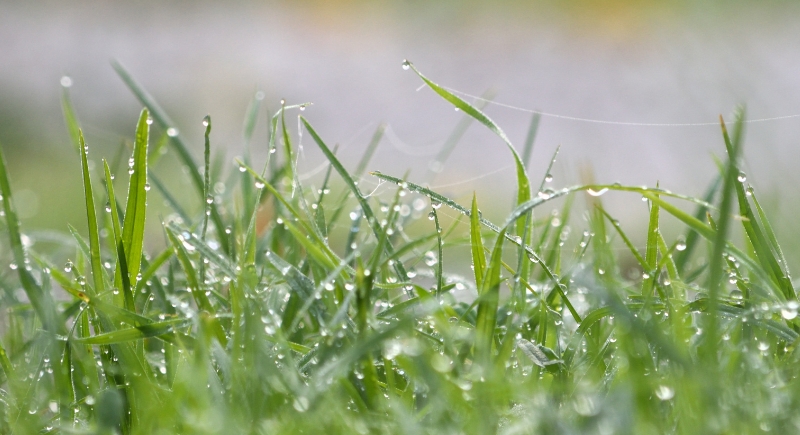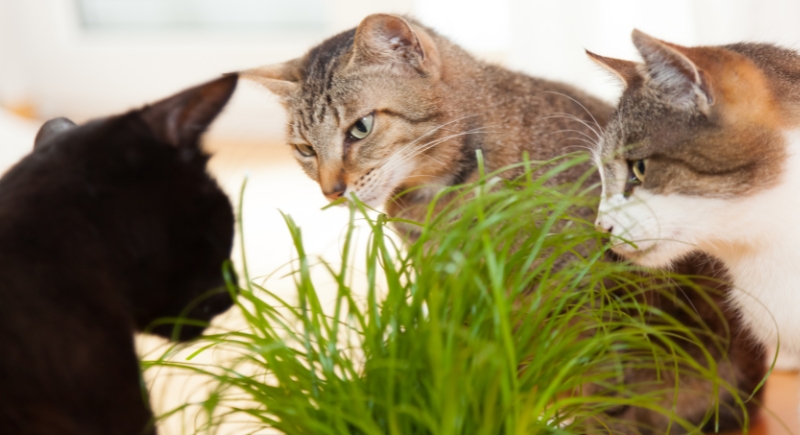Scientists May Have Finally Solved the Mystery of Why Cats Eat Grass
Cats’ habit of eating grass has long puzzled pet owners and scientists. They chew it, they gag, they vomit, but they keep going back. For years, the habit has been linked to everything from upset stomachs to hidden instincts.
However, a recent study has moved focus from cats to the grass itself. Researchers used high-resolution imaging to examine what happens when plant material mixes with swallowed hair. The results suggest a surprising function that may have more to do with physics than biology.
Grass Has Built-In Features That Catch Hair

Image via Getty Images/Rosalie McGlashan
Plant biologist Nicole Hughes and student Kara Bensel examined hairballs pulled from Hughes’ two cats. These had been stored beforehand and then prepared for scanning via electron microscopy by coating them in gold. Under the microscope, they discovered that the grass fragments embedded in the fur had sharp, jagged features. Many were covered in trichomes—tiny, spikelike projections that stuck out in different directions. These structures were between two and twenty times wider than a single cat hair.
The researchers realized that these rough surfaces could physically catch loose hair in the digestive tract, similar to how a drain-cleaning tool snags tangled strands in a sink. Grass, in this context, acts less like food and more like a tool. It doesn’t nourish cats or calm their stomachs. Instead, it might help them eject compacted hairballs more effectively with the help of the structural features of the plant to assist in mechanical removal.
Parasites Are Too Large for This Mechanism to Work
One of the earliest theories about cats consuming grass indicated that they do it to expel intestinal parasites. However, Hughes and her team measured the scale of the grass microstructures and compared them to parasite sizes.
Roundworms and tapeworms—common parasites in mammals—are up to sixty times wider than the trichomes found on grass. Those dimensions make it physically impossible for the plants to catch or bind to these organisms. The theory that grass helps eliminate parasites through mechanical action doesn’t hold up under scrutiny.
Although this idea remains popular, especially among those studying wild carnivores, the data suggest a more specific target: fur. Cat hair falls within the size range where these plant structures could interact meaningfully.
Parasite removal may have motivated grass-eating in some ancestral species, but it no longer appears to explain how cats benefit from it today. The evidence now points away from gut-cleansing by grass and toward its role in managing hair buildup from grooming.
Grass-Eating Behavior Happens Without Visible Illness

Image via Getty Images/w-ings
Several surveys show that most felines eat grass at some point. A 2021 study found that more than 70% of cats had been observed chewing on plants at least six times in their lives. Importantly, over 90% of these cats showed no signs of sickness before doing it. Some vomited afterward, but it wasn’t a guaranteed outcome.
In fact, vomiting occurred in only about a third of cases. Long-haired cats, which often struggle with hairballs, did not show a higher rate of grass-eating compared to short-haired cats. That outcome challenges the idea that cats seek grass only when they feel unwell or are trying to manage excess fur.
These findings also challenge the view that the actions are a learned response. Younger cats, who haven’t had time to observe older cats or establish habits, still engaged in it frequently. Grass consumption seems to be an innate behavior that persists regardless of immediate digestive distress or coat length.